


Radar
Due to different design parameters, no single radar set has been produced that can perform all of the radar functions required by combatant ships. As a result, the modern warship has several radar sets, each performing a specific function. A shipboard radar installation may include surface search, navigation radar, air search radar, a height finding radar, and various fire control radars.
The primary functions of a surface search-radar are detection and determination of accurate ranges and bearings of surface targets and lowflying aircraft, and maintaining a 360� search for all targets within line-of-sight [LOS] distance from the radar antenna. Since the maximum range requirement of a surface search radar is primarily limited by the radar horizon, higher frequencies are used to permit maximum reflection from small target-reflecting areas such as ship masthead structures and submarine periscopes. Narrow pulse widths are used to permit a high degree of range resolution at short ranges, and to achieve greater range accuracy. High pulse repetition rates are used to permit maximum definition of targets. Medium peak powers can be used to permit detection of small targets at LOS distances. Wide vertical beam widths permit
compensation for pitch and roll of ownship and detection of low flying aircraft. A narrow horizontal beam width permits accurate bearing determination and good bearing resolution.
The primary function of an air search radar is to detect aircraft targets and to determine their ranges and bearings over relatively large areas while maintaining a complete 360� surveillance from the surface to high altitudes. Air search radars
have relatively low radar frequencies, permiting long range transmissions with minimum attenuation. They use wide pulse width and high peak power to aid in detecting small targets at great distances, and low pulse repetition rates to permit greater maximum measurable range. A wide vertical beam width helps ensure detection of targets from the surface to relatively high altitudes, and to compensate for pitch and roll of ship, while a medium horizontal beam width permits fairly accurate bearing resolution while maintaining 360� search coverage.
Ship's radars can perform a variety of functions. For example, most height finding radars can be used as secondary air search radars, and in emergencies, fire control radars have served as surface search radars.
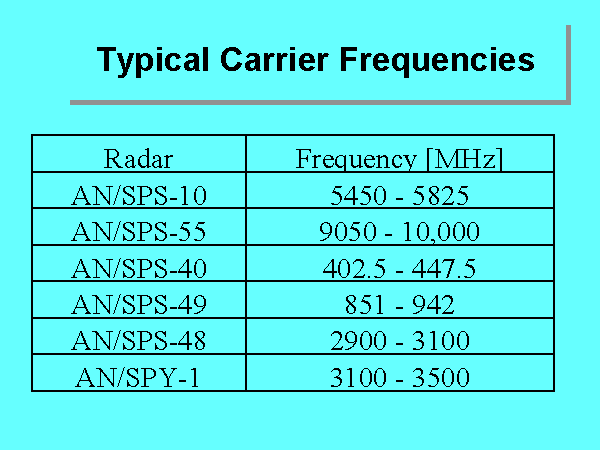
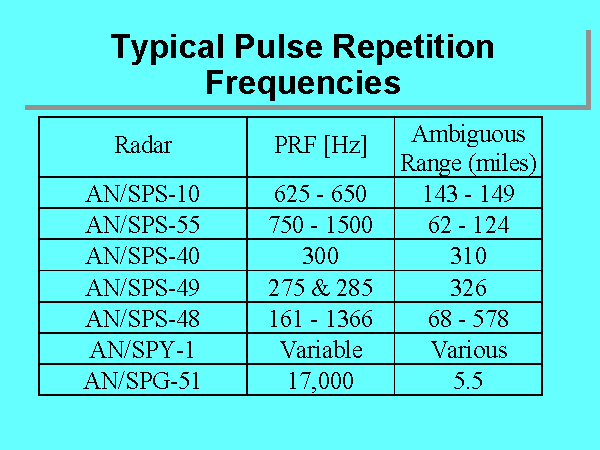
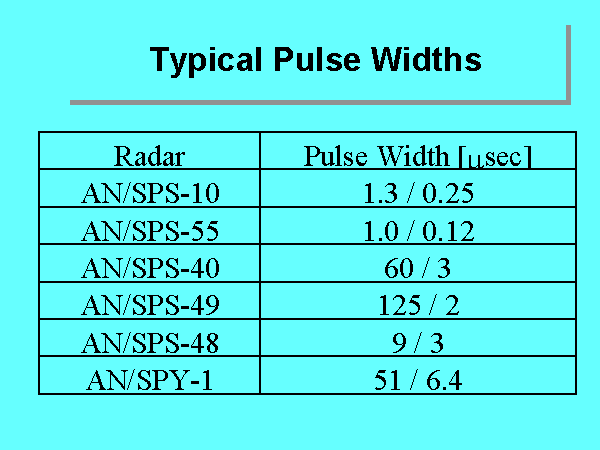
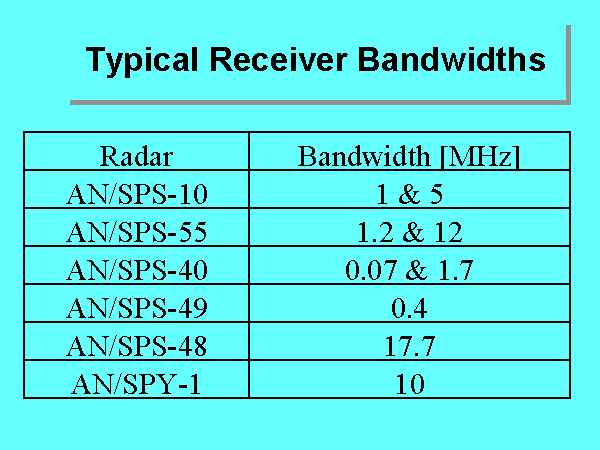
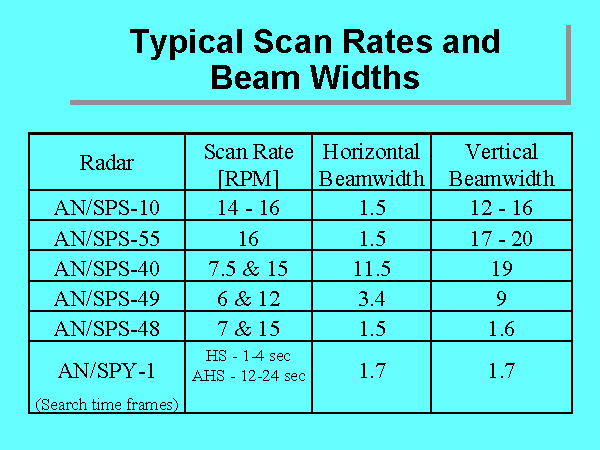

Sources and Resources
http://www.fas.org/man/dod-101/sys/ship/weaps/radar.htm
Maintained by Robert Sherman
Originally created by John Pike
Updated Saturday, December 12, 1998 7:17:49 AM














